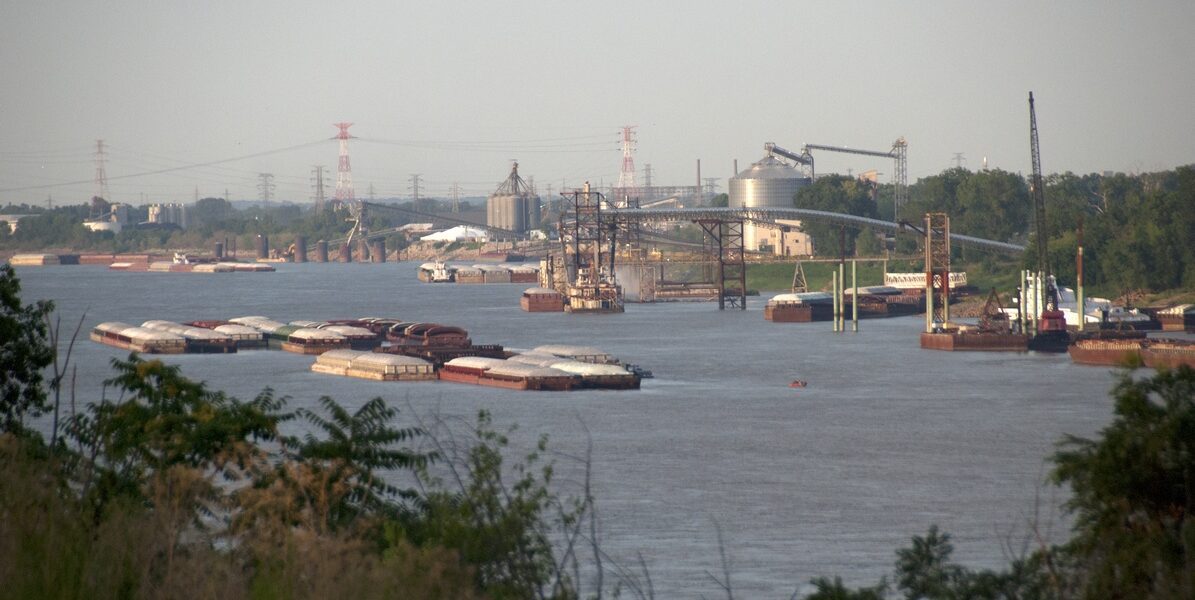Looking down at the Mississippi River from Bellerive Park in south St. Louis, the most prominent features aren’t eagles and egrets but barges and tows. The Port of St. Louis may lack the natural beauty of other parts of the Mississippi, but it’s a busy place. Millions of tons of bulk products move through every year, yet the port remains unknown to most of us.
A City Built on River Commerce
“I like to say our Port has been moving goods across three centuries,” said Susan Taylor, the Port Director for the St. Louis Port Authority. Commodities have been moving in out and out of St. Louis for a long time, and people have been traveling the Mississippi to trade goods even longer.
The Mississippians who built the ancient city we call Cahokia traveled the big river to exchange goods such as maize for copper from the Great Lakes and seashells from the Gulf Coast. During the peak years of steamboat travel, thousands of boats landed at the St. Louis levee to unload their wares and pick up new ones. After the Civil War, railroads took over most long-haul transit and river shipping dramatically declined. By 1900, the amount of freight moved on the Mississippi at St. Louis (757,590 tons) was less than half of what it had been in 1870.
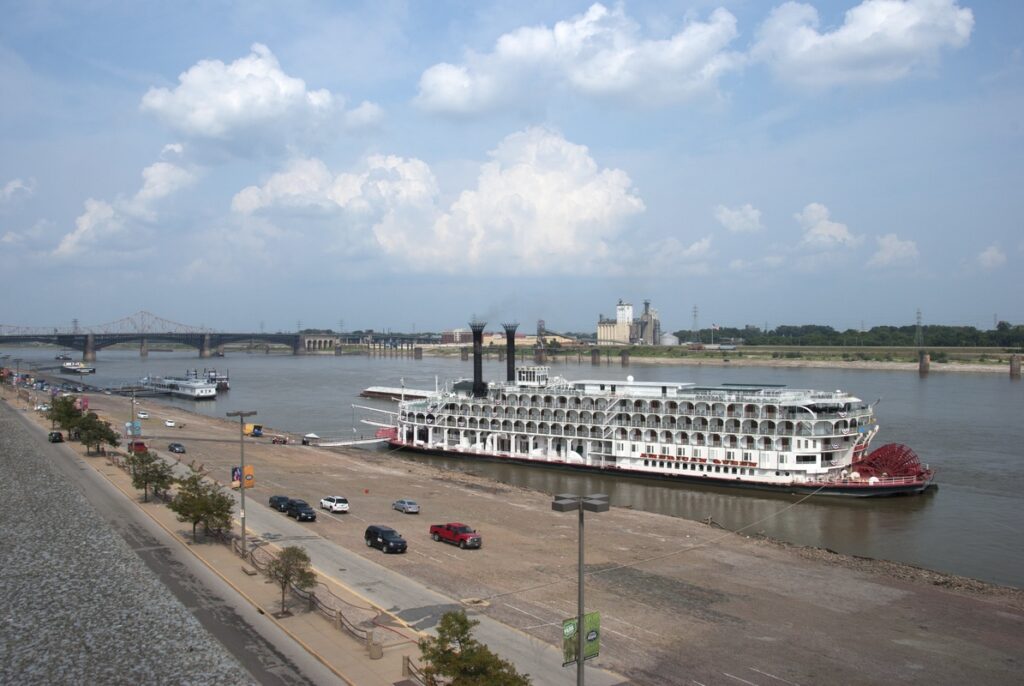
In the early twentieth century, the federal government spent hundreds of millions of dollars to engineer the Mississippi River for bulk transportation. The twenty-nine locks and dams north of St. Louis—most of them built in the 1930s during the Depression-era New Deal building boom—created a channel depth of at least nine feet from Minneapolis to St. Louis. From Baton Rouge to the Gulf, the U.S. Army Corps of Engineers—the river’s managers—relies on dredging and structures like wing dams to maintain a minimum channel depth up to fifty feet. The federal projects increased barge shipping, and the port of St. Louis was one of the biggest beneficiaries.
The Port of St. Louis
The Corps defines the Port of Metropolitan St. Louis as a seventy-mile corridor from Granite City to the Kaskaskia River. It includes four separate entities: America’s Central Port in Granite City (located on part of the former Granite City Army Depot), the St. Louis Port Authority, and Kaskaskia Regional Port Districts 1 and 2.
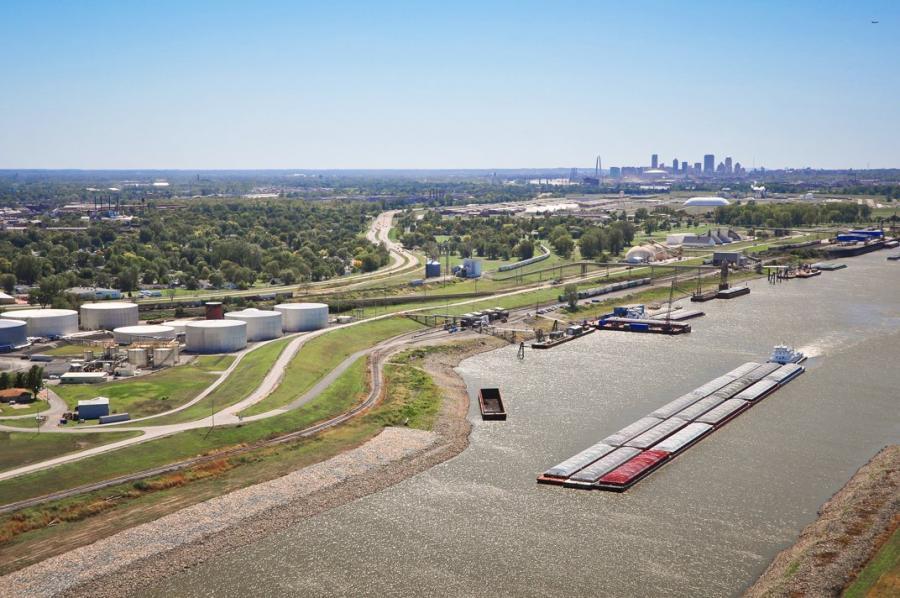
Within that seventy-mile section, there are over two hundred privately operated docks and barge terminals. “A majority of those docks and terminals are tied into other modes of transportation,” explained Mary Lamie, Executive Vice President of Multi-Modal Enterprises for Bi-State Development. St. Louis Regional Freightway, founded in 2015 as one of Bi-State Development’s five business enterprises, promotes the St. Louis region’s freight-handling capabilities around the world. They also bring stakeholders together to coordinate efforts and work to attract new jobs in manufacturing and logistics.
In 2019, the Port of Metropolitan St. Louis was the third busiest inland port (as measured by tons of goods handled). Only the inland ports at Huntington, West Virginia, and Cincinnati were busier. The St. Louis Port Authority manages port operations for St. Louis City’s portion of the Mississippi. While the City of St. Louis has managed cargo entering by river for two centuries, the current Port Authority was created under Missouri law in the 1970s, along with the fourteen other port authorities in the state.
The Port Authority is housed within the St. Louis Development Corporation and manages ten thousand acres across nineteen miles of riverfront. “The city owns about two-thirds of the land along the riverfront, and we lease that out. So we don’t move goods ourselves,” Taylor said. The Port Authority gets no general revenue appropriation from the city. It relies on revenue from leases and the occasional grant for construction projects.
The city owns the Municipal River Terminal just north of the Stan Span, a four-hundred-acre site with a two-thousand-foot dock that was built in 2013 thanks to a $16 million grant from the U.S. Economic Development Administration and a $4 million loan. The terminal is connected to railroad tracks owned by the Terminal Railroad Association and has easy access to interstates. SCF Lewis and Clark Terminals manages daily operations; they signed a twenty-five-year lease in 2015. In 2020, SCF received a $9 million BUILD grant to upgrade the tracks at the Municipal River Terminal to accommodate unit trains.
The state law that created the Port Authority also grants it the ability to issue bonds and create port improvement districts to promote economic development. The Port Authority, for example, would like to take advantage of a state initiative that created Advanced Industrial Manufacturing (AIM) zones. “For every net new job over a certain number, a dollar value of salary, half of their withholding revenue comes to us, the Port Authority,” Taylor explained. The money can’t go directly to a developer, “but we can rebuild a road or a rail crossing. That’s one reason why we wanted to expand the port district.” The St. Louis Port Authority is the only port district in Missouri whose reach is restricted to a portion of the municipality it is part of.
A Freight Hub in Middle America
The St. Louis region is a busy hub in the country’s freight network. Being in the middle of the country helps. The region has four interstates with relatively low congestion. In addition, all six class one railroads have terminals in St. Louis, making St. Louis the third largest rail hub in the country. Commodities can be shipped directly from St. Louis to anywhere in the continental U.S.
Most of the facilities in the Metropolitan Port are owned or operated by private companies, including:
When commodities arrive by river, “typically it’s going to get loaded into a truck or to rail, and then from there it’s going to be disbursed within the St. Louis area or within the Midwest, or in some cases, to either end of the nation if it’s going by rail,” Lamie explained.
Since 2005, public and private entities have invested $200 million in the port facilities, about half of that private money. The expenditures have funded improvements in rail access to barge terminals, roads that connect terminals, and dock improvements.
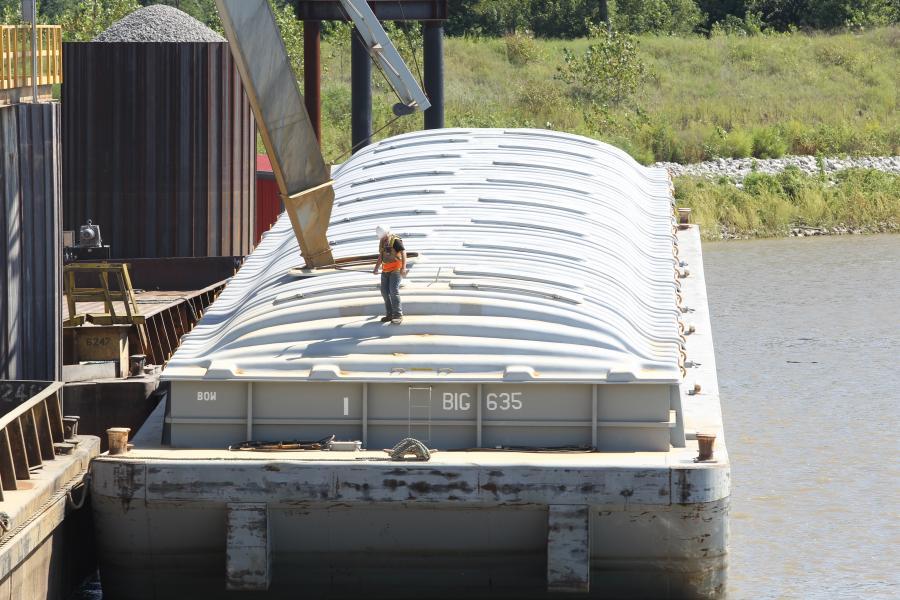
The St. Louis port benefits not only from being in the middle of the country but also from being in a strategic location on the Mississippi River. “North of here, you can’t get more than a fifteen-barge tow because the locks and dams are too small, plus it freezes over as you head north,” Taylor said. These factors keep shipping costs lower than at other ports. It is relatively inexpensive to ship bulk goods from New Orleans to St. Louis, then to distribute them by rail or truck from St. Louis.
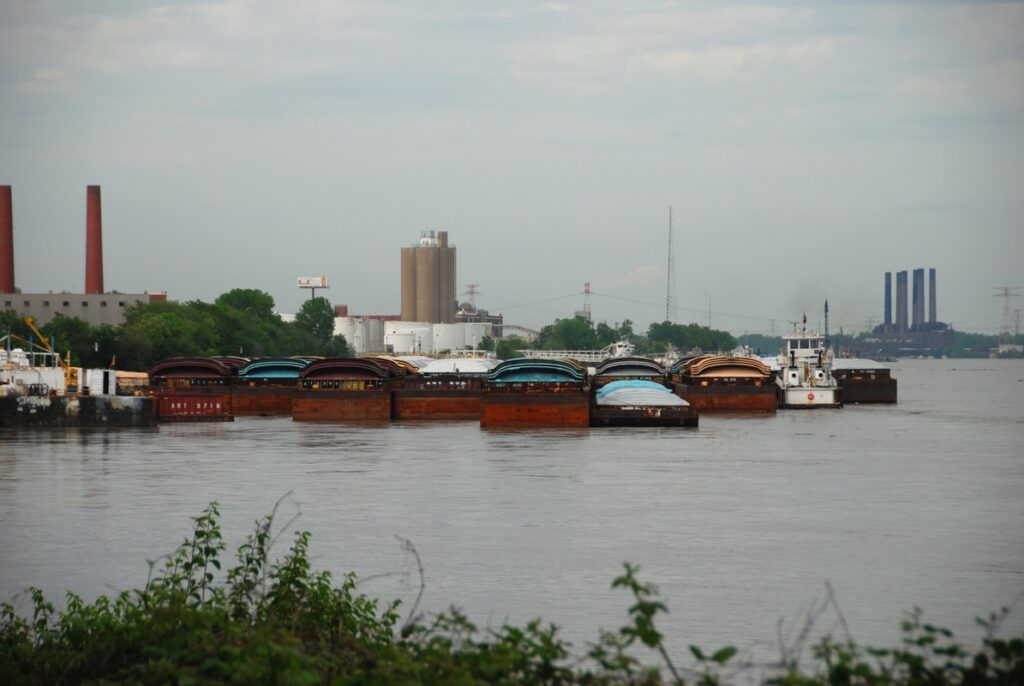
“If you’re shipping to and from New Orleans, the transportation cost on the Mississippi River is extremely cheap. And that’s because you’re going to incur very little delay,” Lamie said.
Another reason that shipping by barge is cheap is that federal tax dollars pay for virtually all of the infrastructure that makes it possible to move barges on the Mississippi River. While barge operators pay a diesel fuel tax that funds new construction or major rehabilitation projects, the federal government funds about 90% of the cost to build, operate, and maintain the navigation infrastructure (for example, locks and dams, bank stabilization, and dredging). In addition, federal tax dollars fund projects that restore the environmental damages caused by navigation infrastructure.
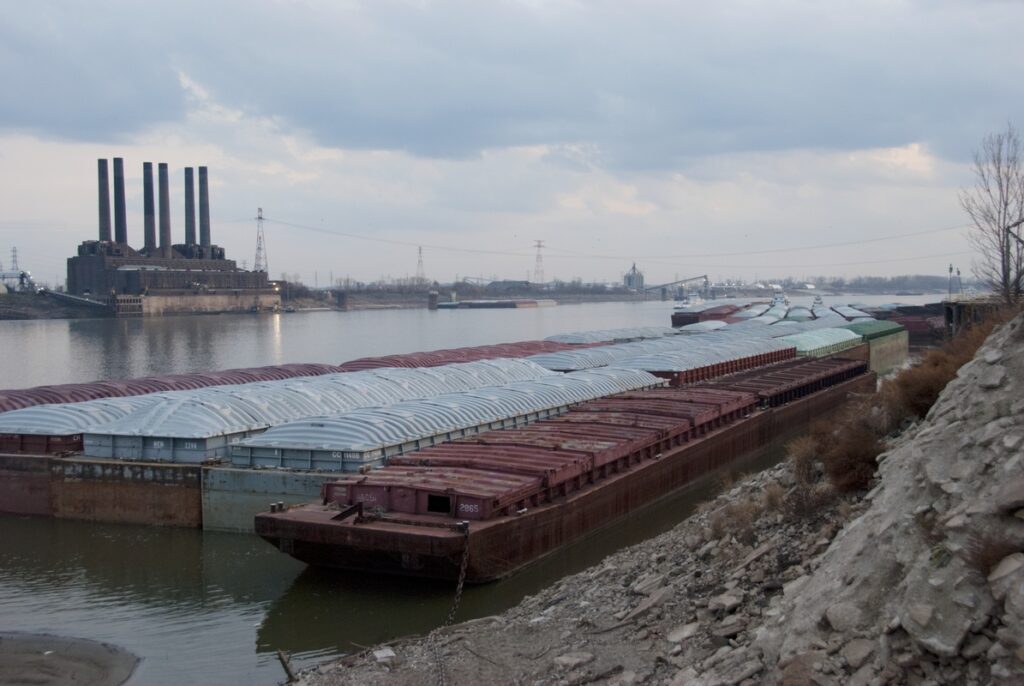
From Furs to Grain
In the city’s early years, animal hides were the dominant items moved on the river. During the golden years of riverboat commerce, steamboats brought products from around the world into the city, as well as hundreds of thousands of migrants and immigrants looking for a new home.
After a steep decline in river shipping, those hundreds of millions of federal dollars spent on navigation infrastructure in the 1930s renewed interest in bulk shipping on the river. For fifty years, the volume of products shipped on the Mississippi grew steadily, then slowly declined again beginning in the 1980s. In 2019, thirty-one million tons of cargo touched one of the port’s facilities. The majority—twenty-four million tons—went downriver, while close to seven million tons of cargo came upriver. Eight hundred thousand tons of cargo moved internally within the port’s seventy-mile boundary (cement and concrete; asphalt, tar, and pitch; and sand and gravel, mostly).
The top commodities going downriver from St. Louis were corn and soybeans, but the port also shipped out significant quantities of cement, coal, and petroleum products. Those products account for nearly two-thirds of the total outbound cargo. The top three commodities that came upriver were coal and lignite, nitrogen fertilizer, and other fertilizer products, which accounted for 16.4%, 12.9%, and 10.1% of inbound cargo.
The high volume of agricultural products moving through the area has led St. Louis Regional Freightway to adopt the nickname Ag Coast of America. “Within that fifteen-mile section of the Mississippi River, we have fifteen barge terminal facilities that are moving more ag and grain products across our docks and barge terminals than anywhere else on the Mississippi River,” Lamie said.
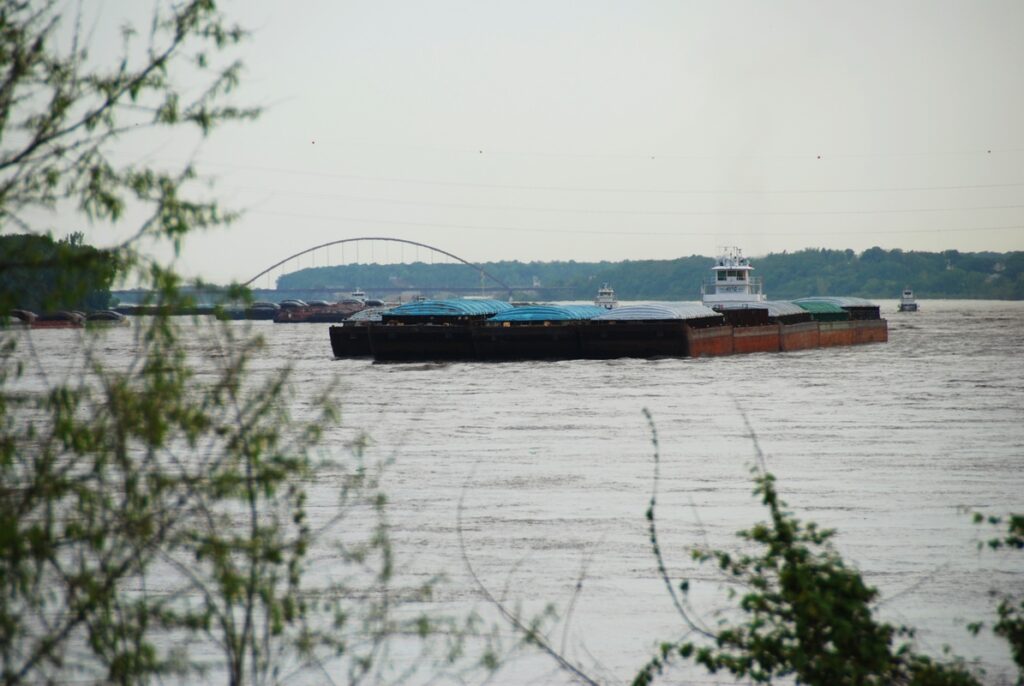
St. Louis also serves an important role in the national transportation network. “The other thing that we offer is that the St. Louis region, we’re a back-up in the event of a supply chain disruption in another region,” Lamie explained. If rails are congested in Chicago, for example, trains can be diverted to St. Louis.
While most of the goods on the river are shipped in barges designed to carry bulk products, some of the river terminals, including St. Louis’s municipal dock, are equipped to handle shipping containers that arrive on barges. It’s not yet clear if or when containers on barges will be a common sight, however, as the economics of moving containers on the river aren’t favorable. “You’re never going to see a barge full of iPads,” Taylor said. “You move heavy, inexpensive stuff, because it’s so much more efficient to move by barge.” American’s Central Port began handling containers in 2020, but so far the primary activity has been returning empty containers to ports at the Gulf of Mexico.
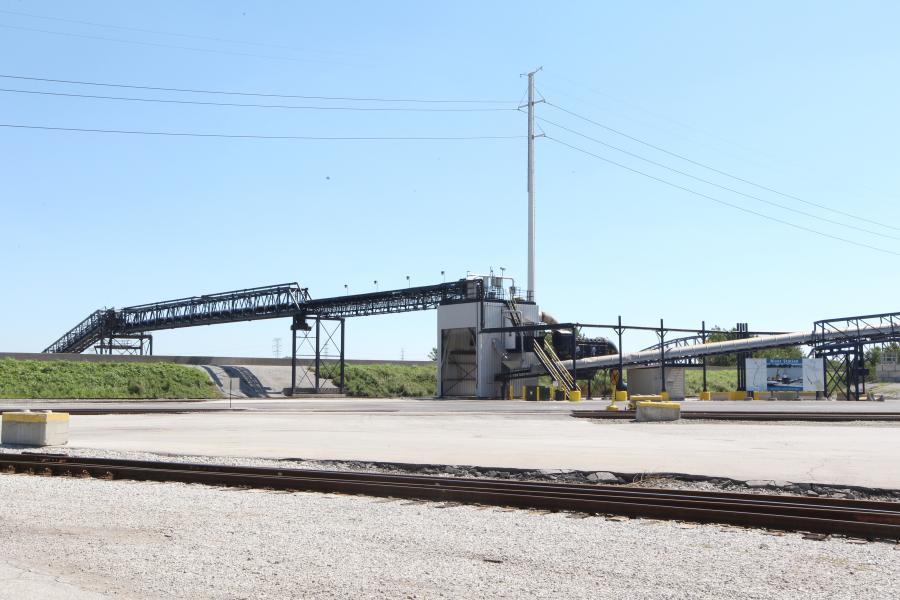
Nationally, inland waterways, including the Mississippi, move about five percent of the freight in the U.S. in any given year. (Pipelines move eighteen percent.) Although river shipping accounts for a small percentage of the total freight moved, a big percentage of commodity crops from the Midwest are shipped on the Mississippi. The Port of St. Louis is part of a tightly coordinated network that moves freight within and through the region.
